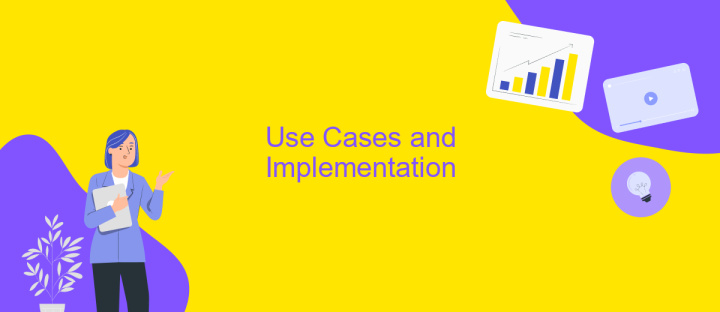Salesforce Wave Data Integration
Salesforce Wave, now known as Salesforce Analytics Cloud, revolutionizes data integration by providing robust tools for seamless data analysis and visualization. This platform empowers businesses to integrate diverse data sources, enabling comprehensive insights and informed decision-making. In this article, we will explore the key features and benefits of Salesforce Wave Data Integration, highlighting its impact on modern data management strategies.
Salesforce Wave Data Integration Overview
Salesforce Wave Data Integration is a powerful feature that allows organizations to seamlessly connect and analyze data from various sources. This integration enables businesses to gain deeper insights and make data-driven decisions with ease. By leveraging Wave Data Integration, companies can unify their data landscape, ensuring consistency and accuracy across all platforms.
- Connect to multiple data sources, including Salesforce, external databases, and cloud services.
- Transform and cleanse data to ensure high-quality and reliable information.
- Visualize data through interactive dashboards and reports for better decision-making.
- Automate data workflows to streamline business processes and enhance productivity.
With Salesforce Wave Data Integration, organizations can break down data silos and create a cohesive data strategy. This integration not only simplifies data management but also empowers users with actionable insights. By harnessing the full potential of their data, businesses can drive growth, innovation, and operational efficiency.
Key Features and Benefits

Salesforce Wave Data Integration offers a seamless way to connect various data sources, providing a unified view of your business metrics. This integration allows for real-time data synchronization, ensuring that your analytics are always up-to-date. The intuitive interface makes it easy to configure and manage data connections without requiring extensive technical expertise. By leveraging tools like ApiX-Drive, users can automate data workflows and streamline the integration process, reducing manual effort and minimizing errors.
One of the key benefits of Salesforce Wave Data Integration is its scalability. Whether you're dealing with small datasets or large volumes of data, the platform can handle it efficiently. Additionally, the integration supports advanced analytics and visualization capabilities, enabling users to gain deeper insights into their data. By consolidating data from multiple sources, businesses can make more informed decisions and drive strategic initiatives. The robust security features ensure that your data remains protected, adhering to industry standards and compliance requirements.
Use Cases and Implementation

Salesforce Wave, also known as Salesforce Analytics Cloud, is a powerful tool for data integration and analysis, offering a range of use cases for businesses. Its ability to seamlessly integrate with various data sources makes it ideal for organizations looking to gain actionable insights from their data.
- Sales Performance Analysis: Integrate sales data from CRM to analyze performance metrics, forecast sales, and identify trends.
- Customer Behavior Insights: Combine data from marketing, sales, and service departments to understand customer behavior and preferences.
- Operational Efficiency: Integrate data from supply chain and inventory systems to optimize operations and reduce costs.
- Financial Reporting: Consolidate financial data from different departments for comprehensive financial analysis and reporting.
- Marketing Campaign Effectiveness: Analyze data from various marketing channels to measure campaign performance and ROI.
Implementing Salesforce Wave involves several steps: identifying key data sources, setting up data connections, and creating dashboards and reports. Businesses should ensure data quality and consistency for accurate analysis. Additionally, leveraging Wave's AI capabilities can further enhance data insights, providing predictive analytics and recommendations. With proper implementation, Salesforce Wave can transform data into a strategic asset.
Benefits and Value Proposition

Salesforce Wave Data Integration offers a transformative approach to managing and analyzing data. By seamlessly integrating diverse data sources, it empowers businesses to make informed decisions with greater speed and accuracy. This integration enhances the overall data ecosystem, providing a unified platform for comprehensive data analysis.
One of the key benefits is the ability to streamline data workflows, reducing the time and effort required to gather and process information. This leads to more efficient operations and allows teams to focus on strategic initiatives rather than data management tasks. Additionally, the integration supports real-time data updates, ensuring that insights are always based on the most current information available.
- Enhanced decision-making through comprehensive data analysis
- Streamlined data workflows and reduced manual effort
- Real-time data updates for accurate and timely insights
- Unified platform for diverse data sources
- Improved operational efficiency and strategic focus
In conclusion, Salesforce Wave Data Integration provides significant value by enhancing data accessibility and usability. It enables organizations to leverage their data assets more effectively, driving better business outcomes and fostering a data-driven culture. This integration is a critical component for any business looking to stay competitive in today's data-centric landscape.
Best Practices and Considerations
When integrating data into Salesforce Wave, it is essential to ensure data quality and consistency. Begin by cleansing and normalizing your data to prevent discrepancies and errors. Establish a robust data governance framework to manage data sources, transformations, and loading processes effectively. Additionally, schedule regular data audits to identify and rectify any issues promptly.
Consider leveraging integration platforms like ApiX-Drive to streamline the data integration process. ApiX-Drive offers automated workflows that can connect various data sources with Salesforce Wave, reducing manual effort and minimizing the risk of errors. Ensure that you configure proper data mappings and transformations within ApiX-Drive to align with your business requirements. By following these best practices, you can enhance the reliability and efficiency of your Salesforce Wave data integration.
FAQ
What is Salesforce Wave Data Integration?
How do I connect external data sources to Salesforce Wave?
What are the common challenges in integrating data with Salesforce Wave?
Can I automate data integration processes in Salesforce Wave?
How do I ensure data security during integration with Salesforce Wave?
Strive to take your business to the next level, achieve your goals faster and more efficiently? Apix-Drive is your reliable assistant for these tasks. An online service and application connector will help you automate key business processes and get rid of the routine. You and your employees will free up time for important core tasks. Try Apix-Drive features for free to see the effectiveness of the online connector for yourself.

